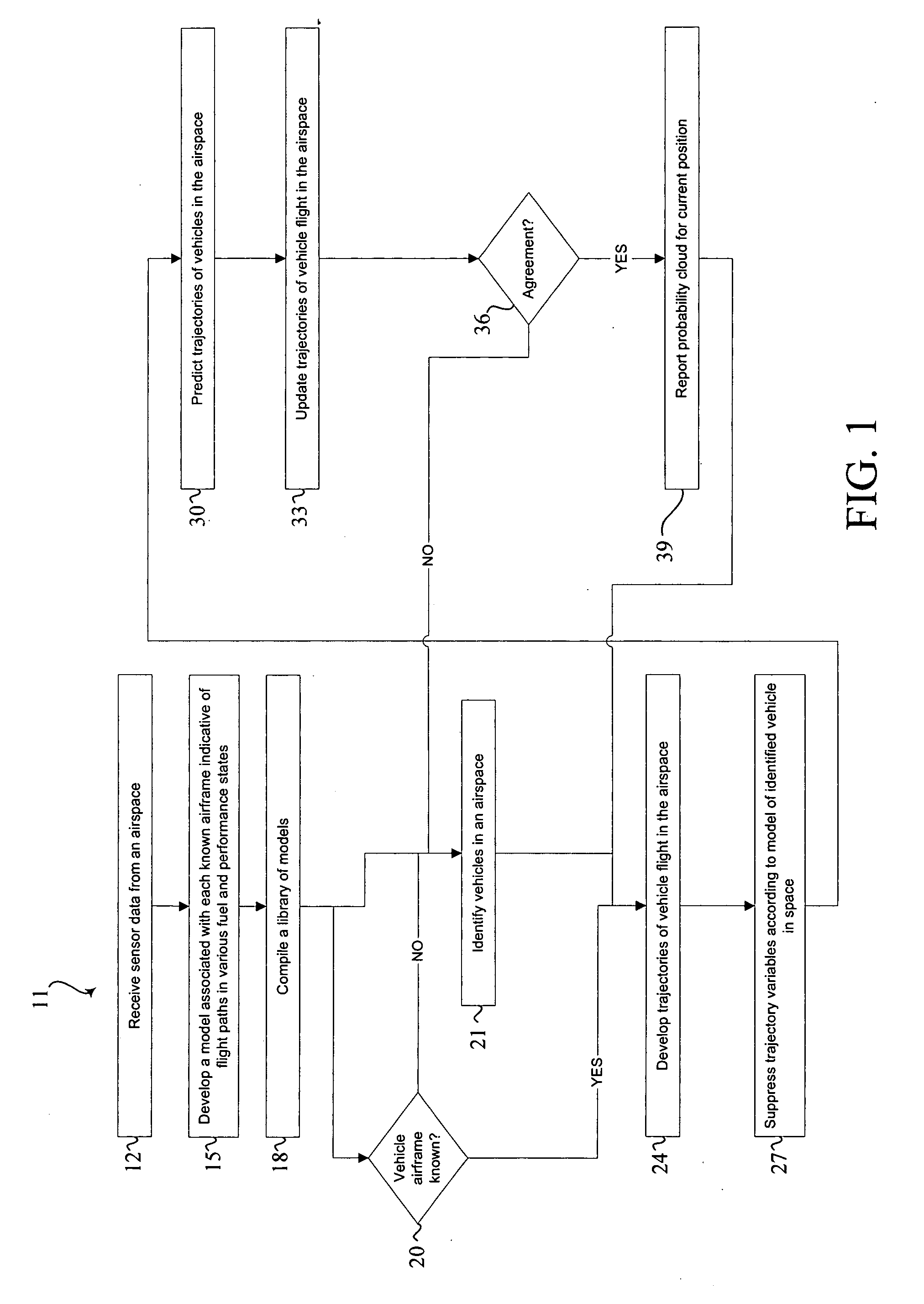Trajectory prediction
- Summary
- Abstract
- Description
- Claims
- Application Information
AI Technical Summary
Benefits of technology
Problems solved by technology
Method used
Image
Examples
Embodiment Construction
[0014] The present invention relates to generating and thus predicting trajectories of vehicles in an airspace. Many specific details of certain embodiments of the invention are set forth in the following description and in FIGS. 1, 2, and 3 to provide a thorough understanding of such embodiments. One skilled in the art, however, will understand that the present invention may have additional embodiments, or that the present invention may be practiced without several of the details described in the following description.
[0015] By way of overview, the problem of tracking a vehicle through an airspace includes processing noisy measurements received from one or more sensors over time to form tracks about potential targets. Sensors are typically very “ego-centric” in that measurements are in spherical coordinates (azimuth, elevation and range, or more likely without elevation) from returns received from the sensor over the current period. Radar return reception, in particular, is noisy ...
PUM
 Login to View More
Login to View More Abstract
Description
Claims
Application Information
 Login to View More
Login to View More - R&D
- Intellectual Property
- Life Sciences
- Materials
- Tech Scout
- Unparalleled Data Quality
- Higher Quality Content
- 60% Fewer Hallucinations
Browse by: Latest US Patents, China's latest patents, Technical Efficacy Thesaurus, Application Domain, Technology Topic, Popular Technical Reports.
© 2025 PatSnap. All rights reserved.Legal|Privacy policy|Modern Slavery Act Transparency Statement|Sitemap|About US| Contact US: help@patsnap.com



